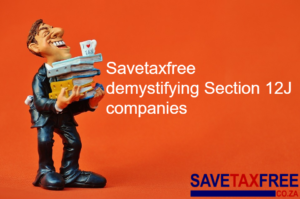Bricks and blocks vs listed property
Related Articles
Nonhlanhla Kunene | 30 March 2017
The physical property vs listed property debate is a difficult and longstanding one. With no one-size-fits-all method to investing, this is one debate which most likely has no clear-cut solution.
 Both options present an equally mixed bag of almost endless possibilities for future growth, coupled with their own sets of risks and disadvantages. The answer may just come down to lifestyle choices and preferences.
Both options present an equally mixed bag of almost endless possibilities for future growth, coupled with their own sets of risks and disadvantages. The answer may just come down to lifestyle choices and preferences.
To get to the crux of the matter, we sought the opinions of both real estate and asset management practitioners.
Physical vs listed – the pros and cons
Portfolio manager of the Futuregrowth Community Property Fund, Smital Rambhai, believes there is a misconception in the market that there’s a difference in risk between listed property and direct physical property. He feels both have equal risk, and the only difference is one is listed on a stock exchange while the other isn’t, and that the reason companies list their properties on the stock exchange is to create liquidity for their investors.
“It is easier to sell your shares in a listed property company when things are not going well. If you own physical property you need to find a buyer which may take longer, and then you will need to go through the deeds office to transfer the property, which can take up to three months.
“There are sizeable unlisted direct physical property funds in the market that generate sufficient liquidity through the net rental income they earn on properties to create liquidity for investors.”
Steve Caradoc-Davies, principal director at Harcourts Platinum in Somerset West, says risk is part and parcel of any investment. He believes the greatest risk with buying physical property is the possibility that its value decreases over time.
However, Caradoc-Davies is quick to add that property markets work in cycles. “In my 27 years in real estate I have never failed to see a recovery cycle where property values not only return to their previous values, but exceed them. You only ever incur the loss when you sell at a loss.
“When you hold a property you may have made a loss on paper, but with sufficient time the market will recover and it would naturally make sense to dispose of the asset only when you are in a profit situation.”
One of the major advantages physical property has over listed property, he says, is that you get enjoy the benefit of your property. A buyer is able to use the property or rent it out for income. With listed property, you have no such benefits.
Property portfolio manager at Investec Asset Management, Neil Stuart-Findlay, puts the case for listed property. When talking about share ownership, he says, it is typically influenced by market forces, so short-term volatility would be a factor.
Rambhai agrees that capital gains and losses can swing on a daily basis. He says unlisted direct physical property funds provide investors with stable returns over the short, medium and long term with a much lower degree of volatility than listed property.
“They’re not subject to short to medium term swings in sentiment. They are known to be less correlated to financial markets in comparison to listed property and capital gains and losses are not experienced on a daily basis as these assets are valued either on a semi-annual or annual basis.”
 The immediate advantage over physical property, says Stuart-Findlay, is the liquidity –you can easily get out of the investment simply by selling the shares – unlike physical property.
The immediate advantage over physical property, says Stuart-Findlay, is the liquidity –you can easily get out of the investment simply by selling the shares – unlike physical property.
Another advantage is the ability to diversify risk across types of properties and their locations.
“When buying direct property, you’re buying a big ticket item, so unless you’re working with a huge budget, you’re constrained in terms of exposure. With shares you can get broad exposure with less capital than you would need to buy direct property. Furthermore, listed property is less management intensive and enjoys lower transaction costs than the physical real estate market.”
Despite the significant capital required to invest in physical property, Caradoc-Davies believes the ability to gear the investment through funding from a financial institution is another significant advantage with physical property. “This is not possible with listed property,” he says.
When you fund a physical property you benefit from 100% of the use (occupation or rental income) as well as 100% of the capital growth, but you are only using a fraction of your own cash to acquire the asset. Taking these factors into consideration, Caradoc-Davies says the net return on investment is significantly better on physical property.
Echoing Caradoc Davies’ sentiments, Rambhai says, besides the access to assets that are not available in the listed property market, direct property also provides stable long-term returns with a much lower degree of volatility than listed property, while giving investor a growing income, if managed correctly.
Overall performance
The IPD index delivered an unparalleled total return of 13.5% in 2015 . In the same period, the Sapy managed an investment return of 8%, 18.6% lower than its performance in 2014 – physical property therefore clearly outperformed listed property.
Stan Garrun, executive director at MSCI, accentuated, in the index report, the significance of physical property in unpredictable times. He said it had maintained “its reputation as a hybrid asset class” over a five-year period.
With regards to physical property, Caradoc-Davies believes the long-term performance of real estate has always seen positive growth. The rate of the growth, he says, depends on the area of the property, the type of property and the market segment the property sits in.
To illustrate, he compared property in a secure and gated estate in Somerset West, which he says would escalate at a much higher rate than a property in the traditional suburbs. “It’s a factor of supply and demand. On average, residential property escalated in value in the Cape Town metro by over 15% in 2016. However, in developments that we market such as Kelderhof Country Village, we saw an average escalation closer to 25%. So you can’t really compare the growth in physical property values with listed property as the physical property markets differ greatly.”
To do this effectively, Caradoc-Davies says you would need to choose a property type, location and market segment and then compare that to the performance of listed property.
The best strategy: be informed
If an individual wished to start a listed property share portfolio or place capital with an appropriate asset manager investing in such shares, says Stuart-Findlay, one would want to make informed decisions. Hence, it would be prudent to approach a financial advisor who can assist in that regard, whilst carefully considering that person’s needs and circumstances.
For investors wanting to pursue the direct property route, Caradoc-Davies recommends they select physical residential property in markets that are showing good growth and where rental demand is strong. Use funding from the bank to acquire the asset and sell only when the market is strong.
Rambhai’s take is for the benefits of diversification, there is a place for both listed and physical property in an investor’s portfolio. “We do caution investors that invest in unlisted direct physical property funds to invest only with reputable companies that are registered with the FSB with a good track record.”
He says investors can to buy physical property in their own private capacity, but warns this would require a significant amount of time to manage. “The owner would need to find tenants, sign leases, do repairs and maintenance, collect rentals, evict tenants and perform accounting functions, among other things. By investing in listed property companies or unlisted direct physical property funds, you are essentially buying into a pool of property assets, which someone is managing on your behalf.”
For investors considering listed property, why not invest tax-free. Visit our investment directory for a comprehensive list of property shares offering tax-free returns.






